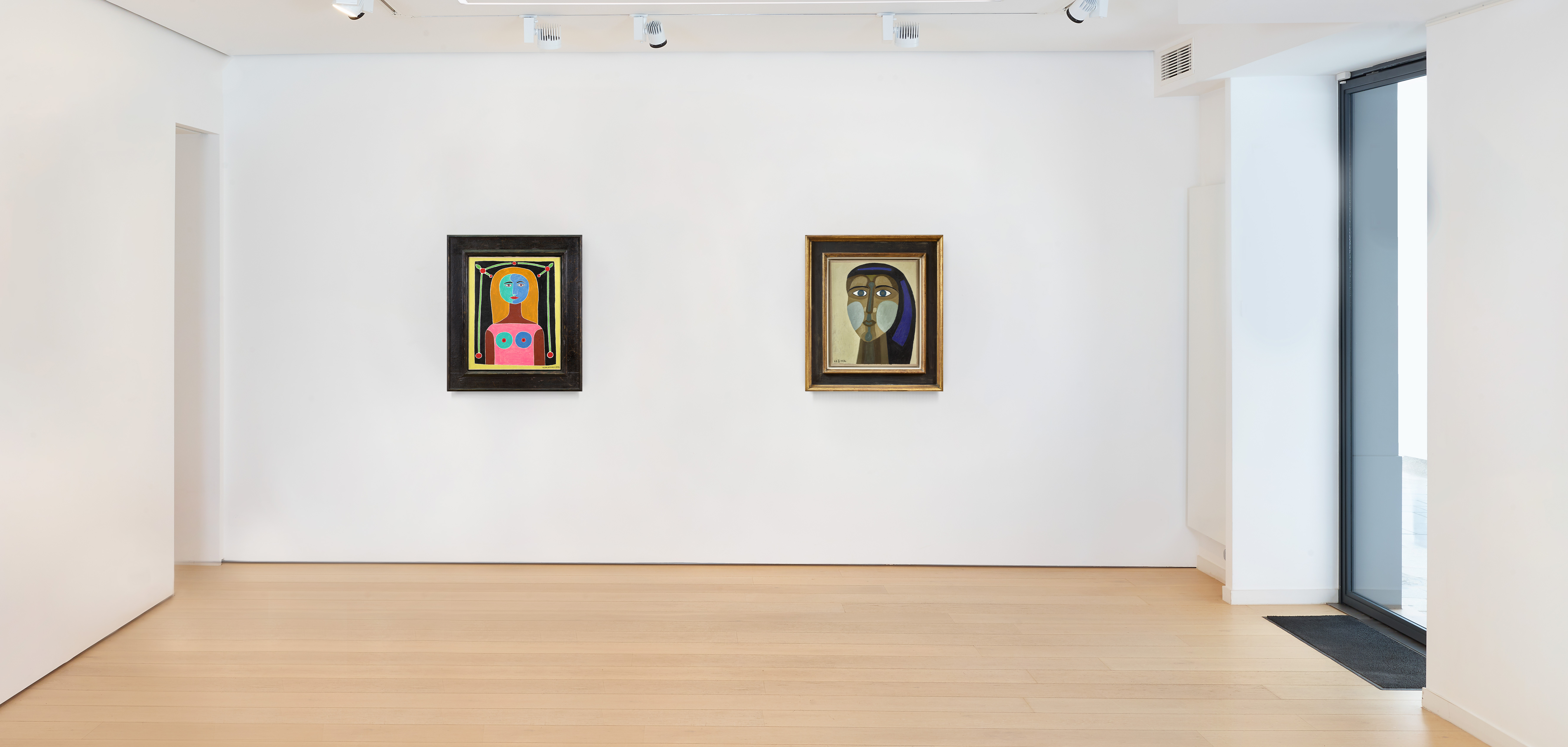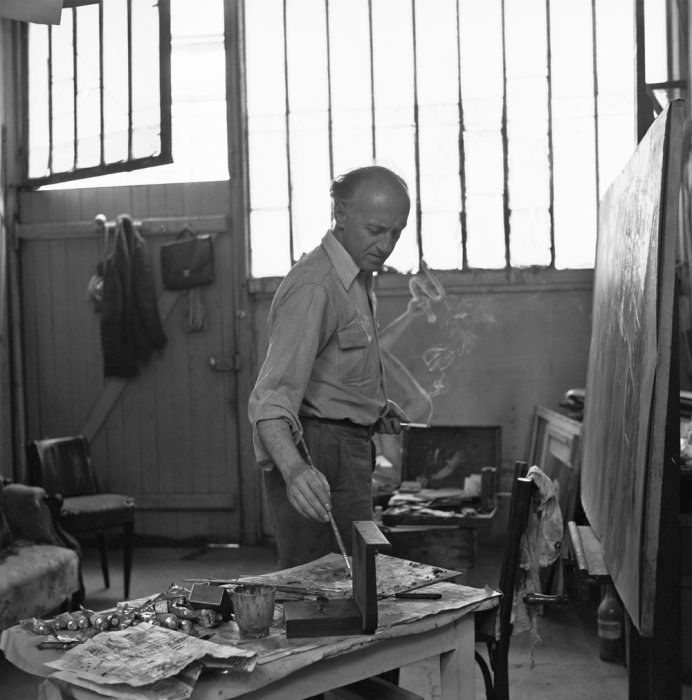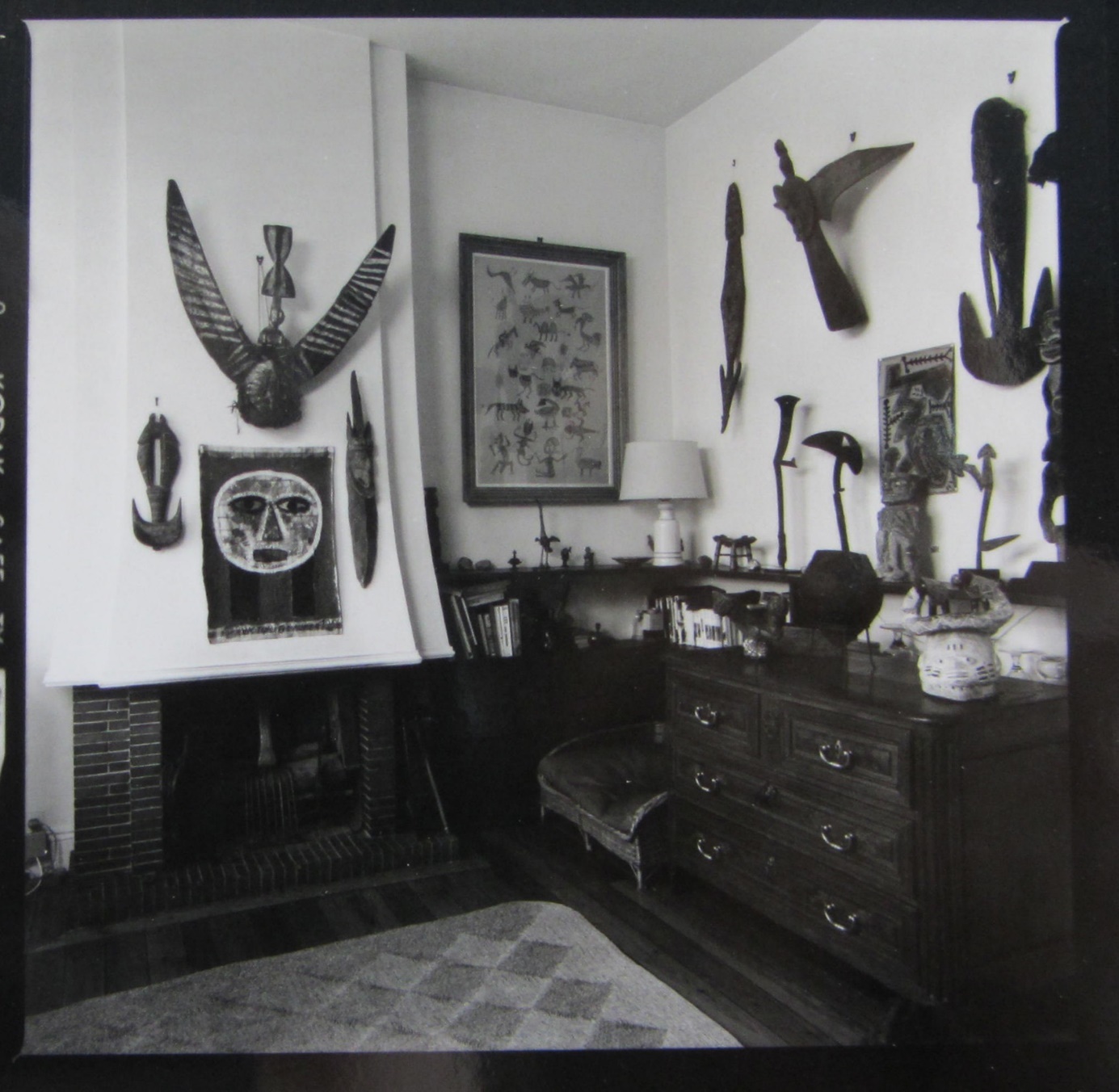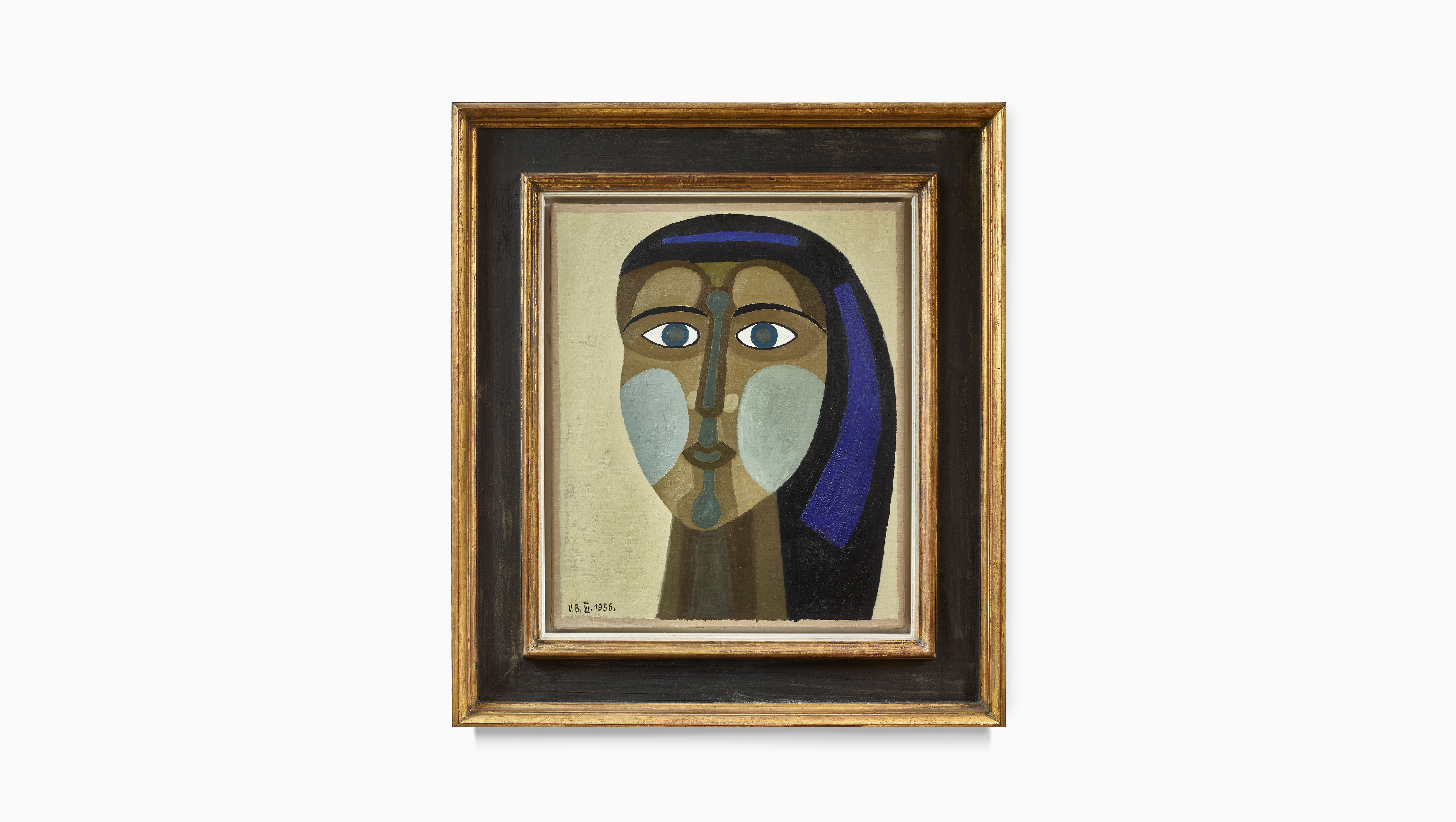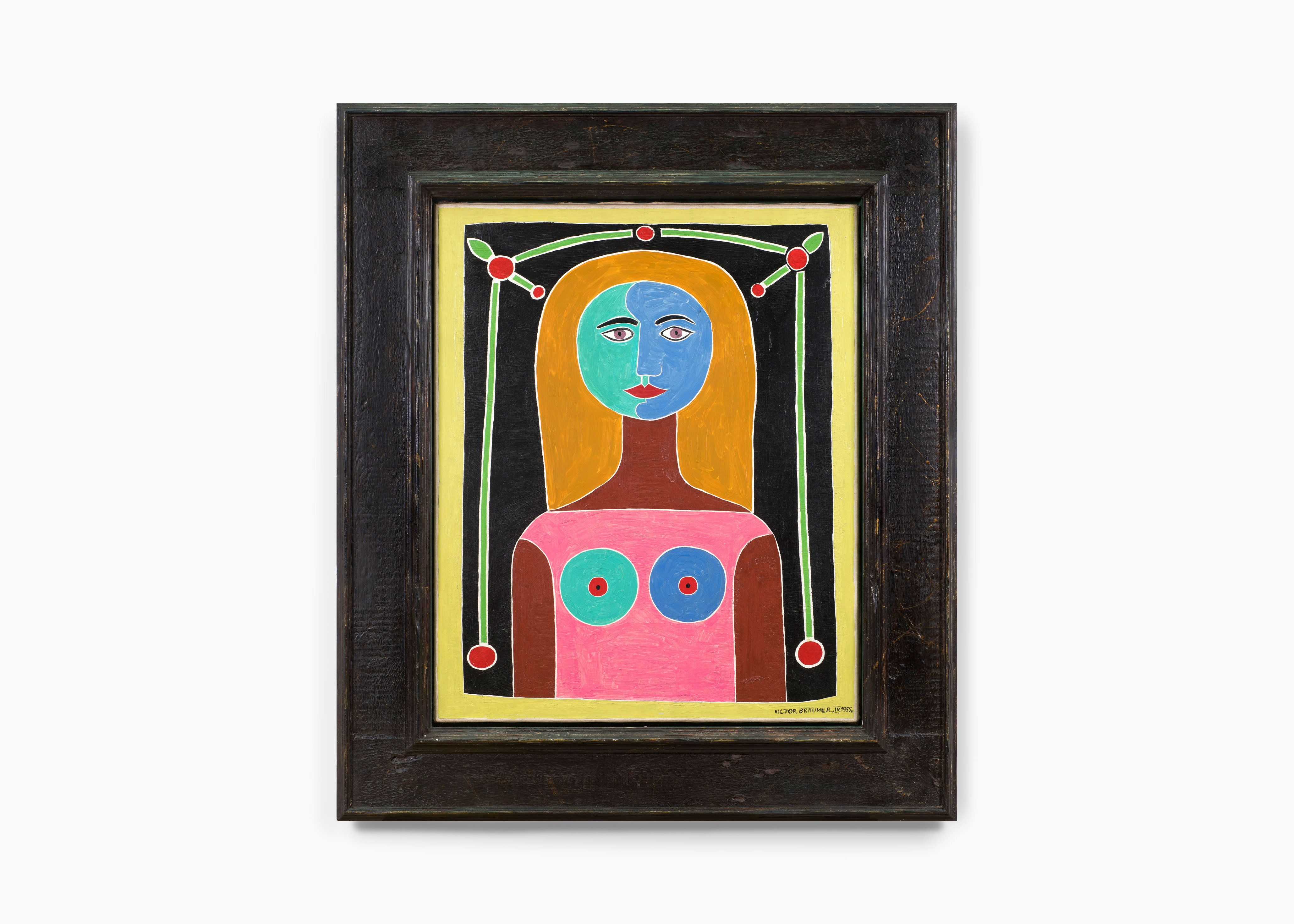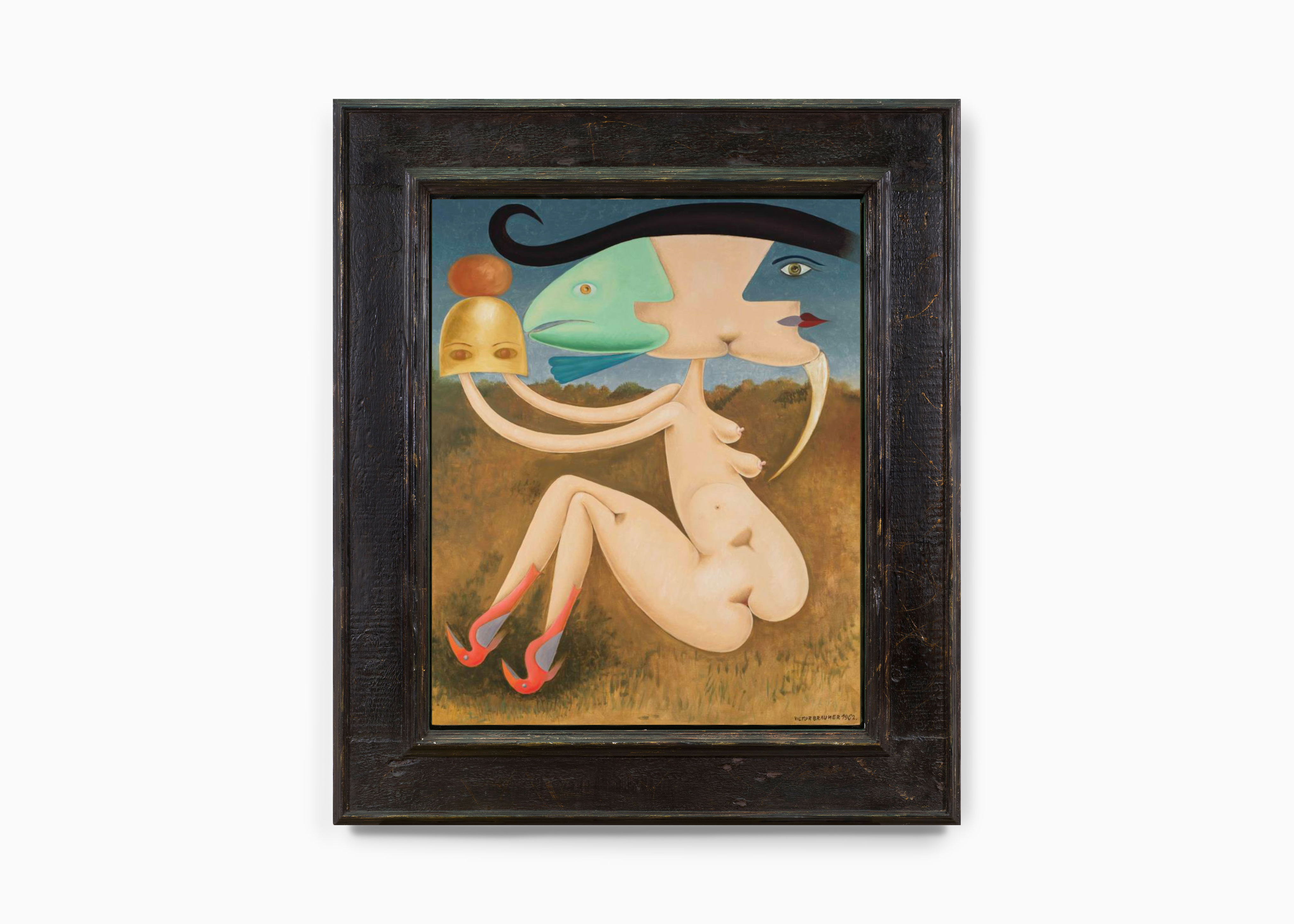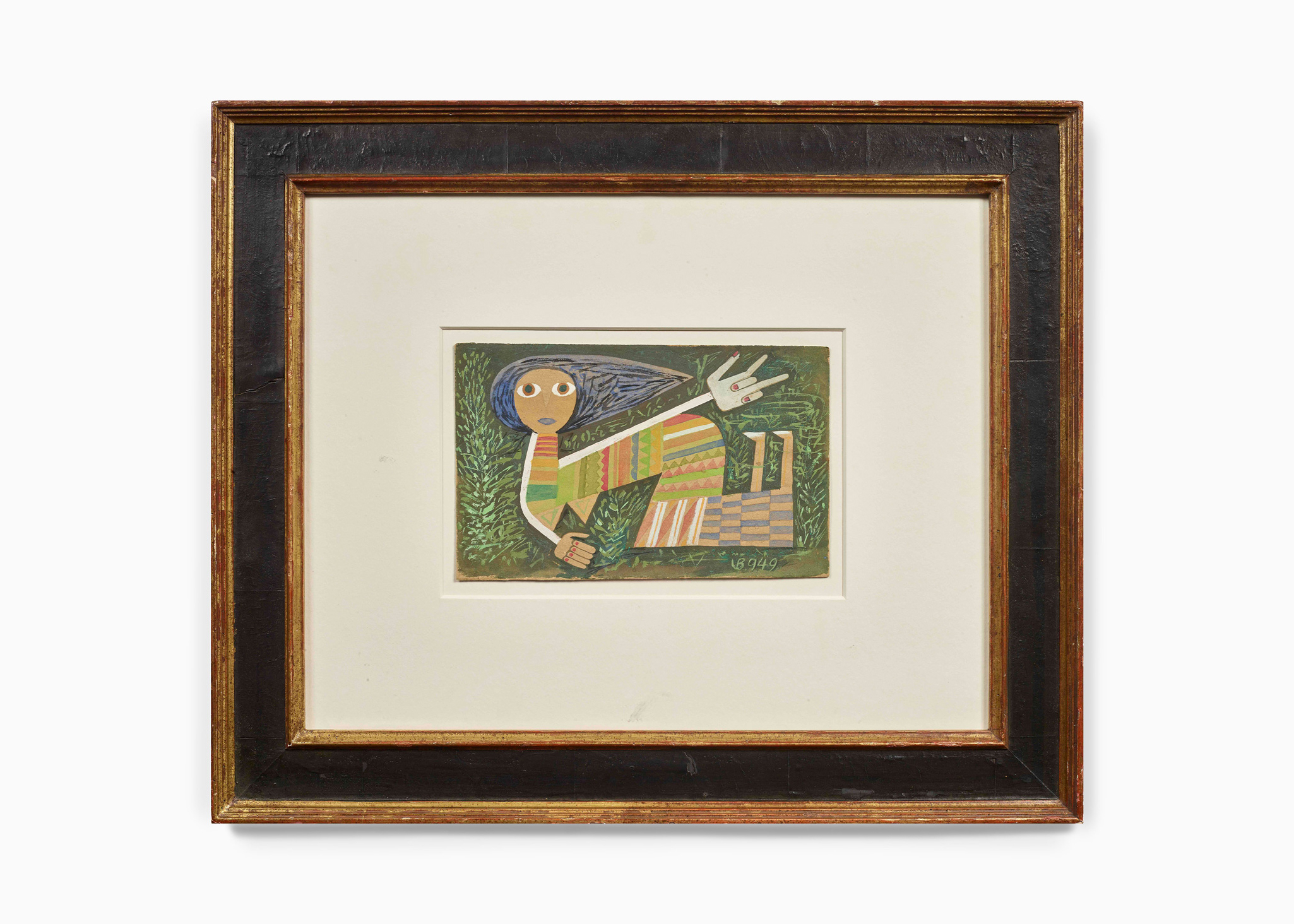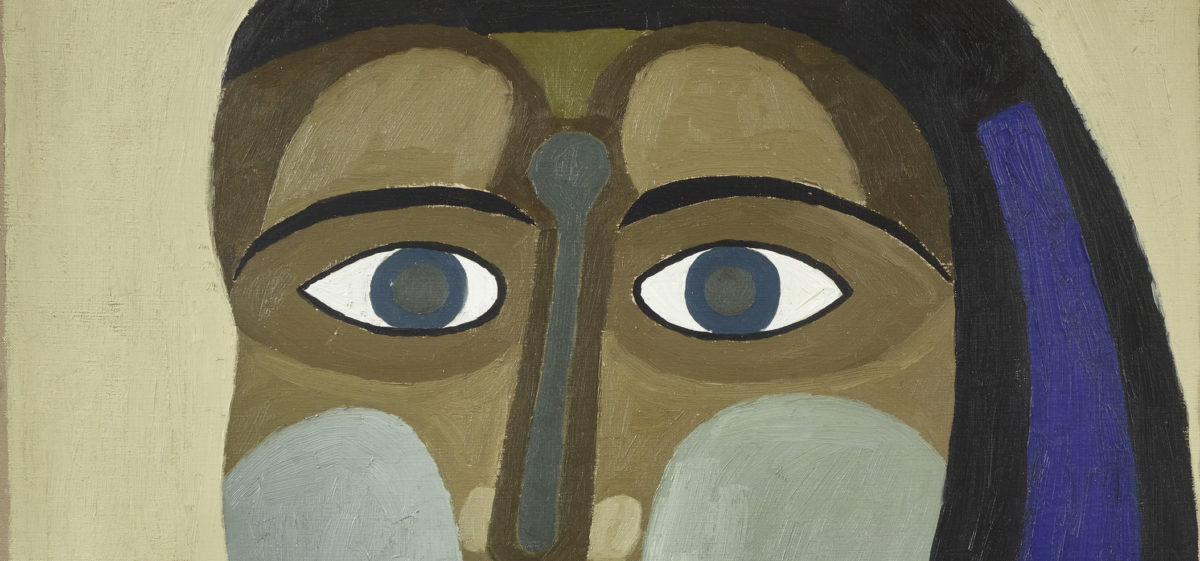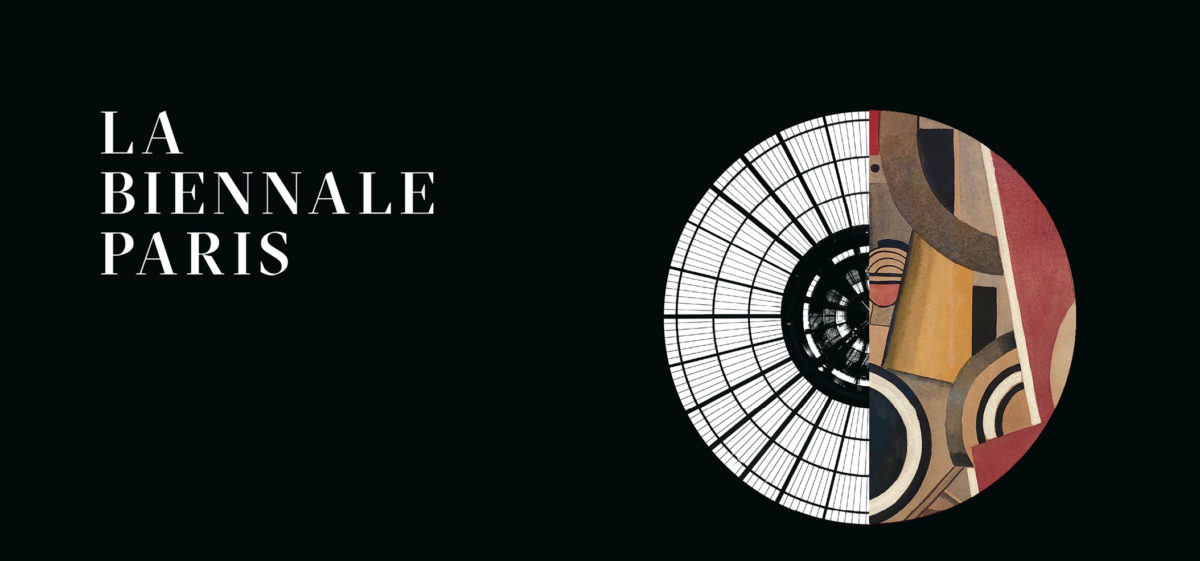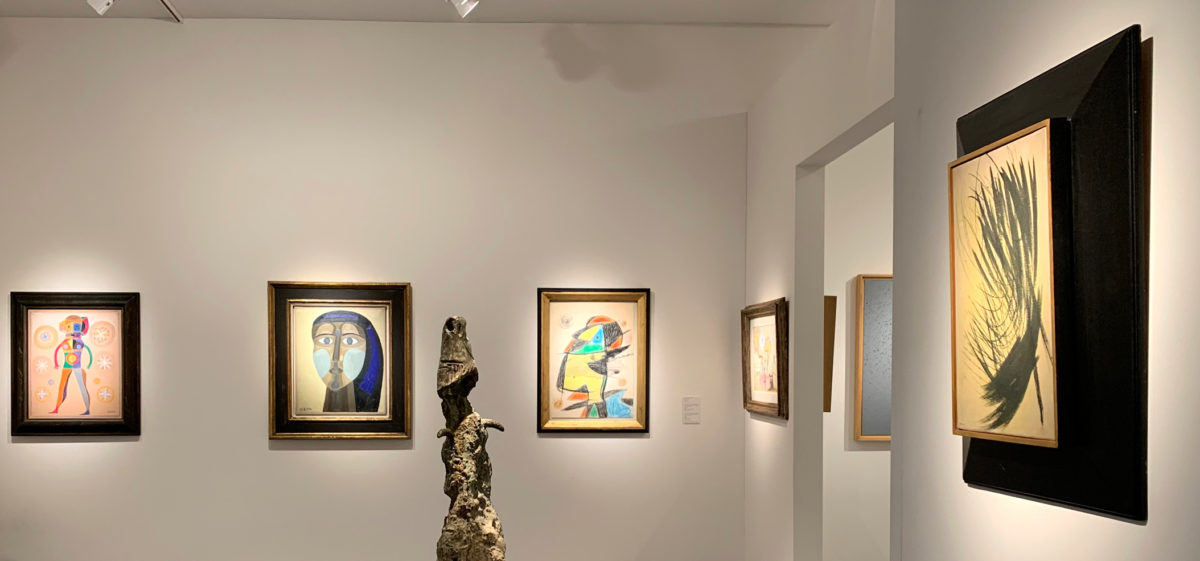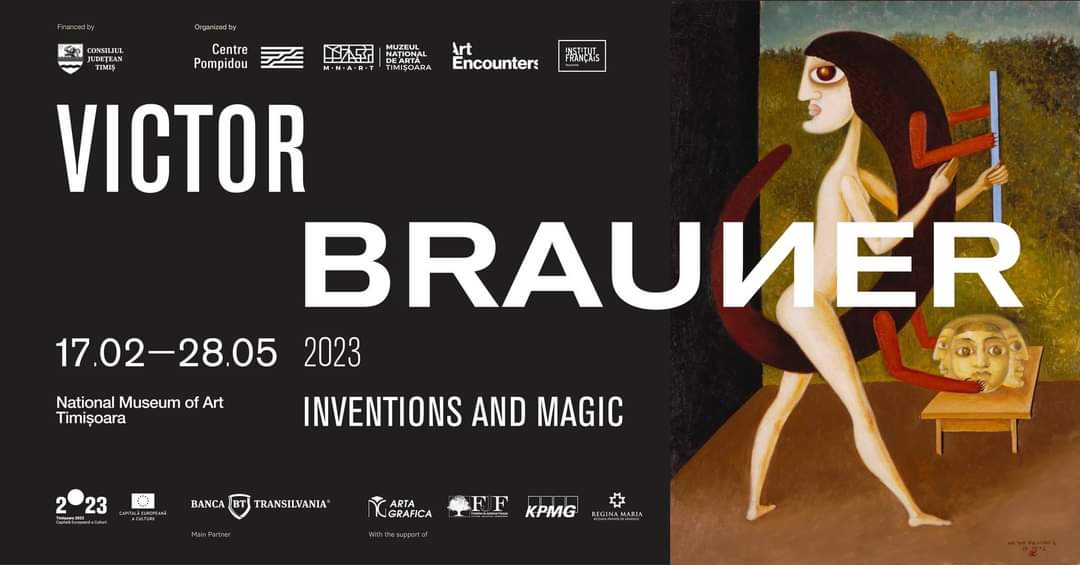Victor Brauner was a painter and sculptor, born in 1903 in Patra Neamt, a small town in the Carpathians in Romania. He was an essential figure of Surrealism, a movement he joined in 1932. An active member of the avant-garde in Bucharest during the 1920s, he visited Paris periodically in 1925 before settling there permanently in 1938. It was in Paris that he made the decisive encounters that influenced his subsequent artistic career: Brancusi, Yves Tanguy, Max Ernst, René Char, and of course André Breton, the theoretician and leader of the movement, who praised him and considered him to be “…the leader of a magnificent body of work – by far the most important made in Paris, […] probably the only one that counts.”
From his childhood with a spiritualist father, the young Brauner retained and maintained a pronounced taste for the hidden, mysterious, occult and esoteric worlds, dimensions which intensely stimulated his imagination to better inform his work. The loss of his eye in 1938 made a premonition of his eyeless self-portrait, painted seven years earlier. He subsequently became seized with the conviction that he could see beyond the visible, through a kind of magical thought, which accentuated his aura of great mystery and his status as a “painter-seer.”
Brauner’s world is populated by chimaeras, human beings with hybrid, reinvented bodies, symbolic animals, erotic protuberances, a whole living matter which formed the basis of a language granting access, not to reality, but to its hidden dimensions. This fertile imagination, which was constantly evolving, came to life throughout a wide variety of techniques and media that translated his successive objects of research: paintings on canvas, plaster sculptures, candle drawings, subverted objects.
Offering a cryptic vision of the world, Brauner’s complex and multifaceted work echoes the great upheavals of the twentieth century. It was exhibited in the 1930s in Paris in the context of Surrealist demonstrations or solo exhibitions, following his premiere at the Galerie Pierre in 1934. But Brauner’s recognition was to come after the war. Amongst the important exhibitions, the one at the Maeght Gallery in 1947, where he presented his being-object le Loup-table, represented his break from the Surrealist group. He continued to exhibit in Paris, at the Galerie Pierre Loeb, and at Alexandre Iolas in New York. As a consecration, he was chosen to represent France at the Venice Biennale in 1966, the year of his death.
Brauner’s works are included in major modern art collections: those of the Centre national d’art et de culture Georges-Pompidou in Paris, the Musée d’Art Moderne in Paris, the Peggy Guggenheim Collection in Venice, and the Museum of Modern Art, in New York, the first collection to incorporate one of his works, in 1949.

